1066: Battle of Hastings anniversary marked 950 years on
- Published

A group of "warriors" recreating the 300-mile march made by King Harold
Thousands of people, including 2,000 re-enactors dressed in costume, are marking the 950th anniversary of the Battle of Hastings.
Battle Abbey, in East Sussex, widely accepted as the site of one of the most famous events in British history, is the focus for a weekend of events.
The battle, between William of Normandy and Anglo-Saxon King Harold II, ended in the latter's death.
Thousands of soldiers were killed on 14 October 1066.
The dead were commemorated at a service at Battle Church in Hastings earlier.
For more events in England visit our Pinterest board, external
Discover more at BBC iWonder: Why should I care about 1066?
A group of "warriors" recreating the 300-mile march made by King Harold to the battle site arrived during the morning.
They left York last month, travelling on foot and horseback and living in Saxon-style camps along the way.
Re-enactor Nigel Amos said: "In 300 miles we have seen some great countryside, met an awful lot of fantastic people and engaged with school groups.
"And we have got a feeling of what it would have felt like to have come that distance on that fateful march.
"This is a tribute to King Harold and all of the warriors of 1066 because they are what made this country."
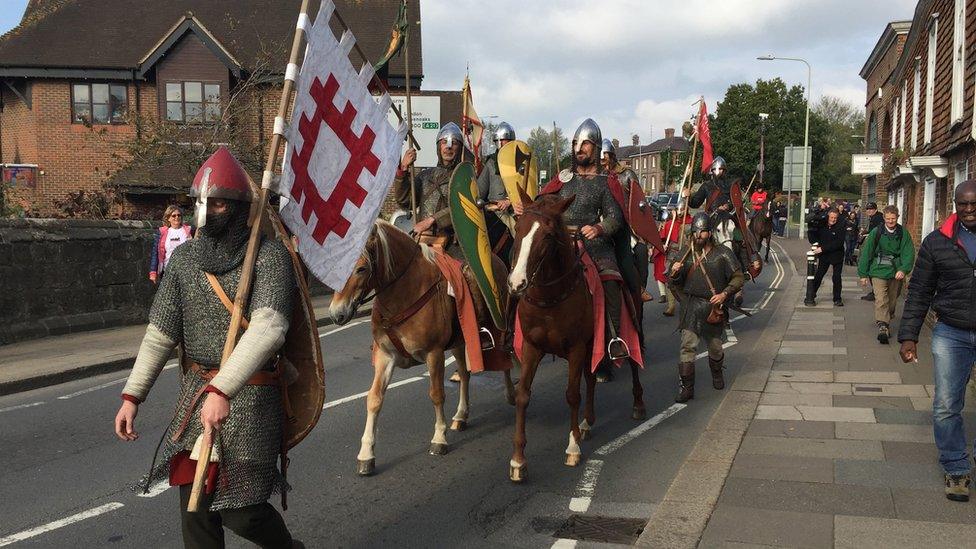
The re-enactors walked through modern-day Battle at the end of their 300-mile march
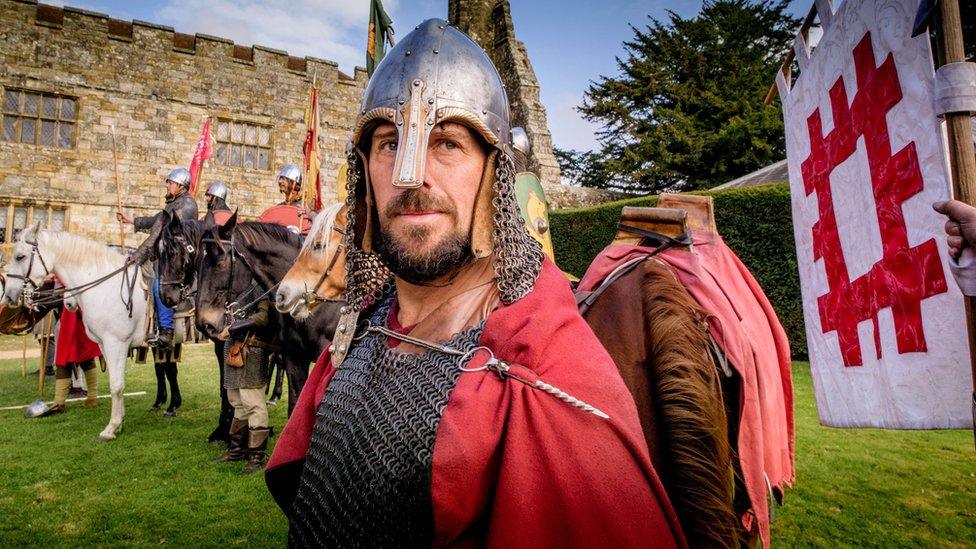
The re-enactors arrived at Battle Abbey on the 950th anniversary of the Battle of Hastings

The 1066 march set out from Clifford's Tower in York for a trek to Hastings
King Harold defeated a Viking army at the Battle of Stamford Bridge in East Yorkshire, on 25 September, 1066, before travelling south to face the Normans.
On 14 October, he fought and was killed at the Battle of Hastings.
Duke William then seized the English throne.
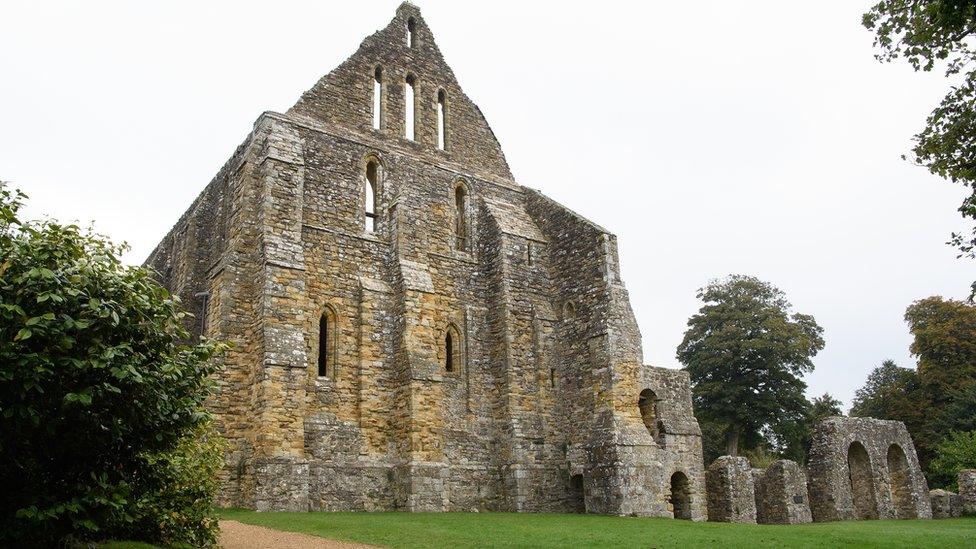
According to legend, William ordered Battle Abbey to be built to mark the site of his victory
Roy Porter, from English Heritage, described the final battle as a "cataclysmic" event.
"It changed English society, changed the way in which English politics worked, changes in architecture, the introduction of castles, the language we speak today is a result of 1066, that mixture of Old English and French," he said.
Home Secretary and local MP Amber Rudd, along with the mayor of Falaise in Normandy, Eric Mace, are among dignitaries from both sides of the English Channel marking the anniversary.
The annual re-enactment of the battle, taking place at Battle Abbey on Saturday and Sunday, is a sell-out English Heritage said.
Meanwhile, a bust of William the Conqueror was unveiled, external at Berkhamsted Castle in Hertfordshire, where English leaders surrendered to the king in 1066.
A fictional "King Harold" Twitter, run by English Heritage to tell the story of the famous date, posted, external at exactly 16:03 BST, marking his death.

1066 and the Norman Conquest
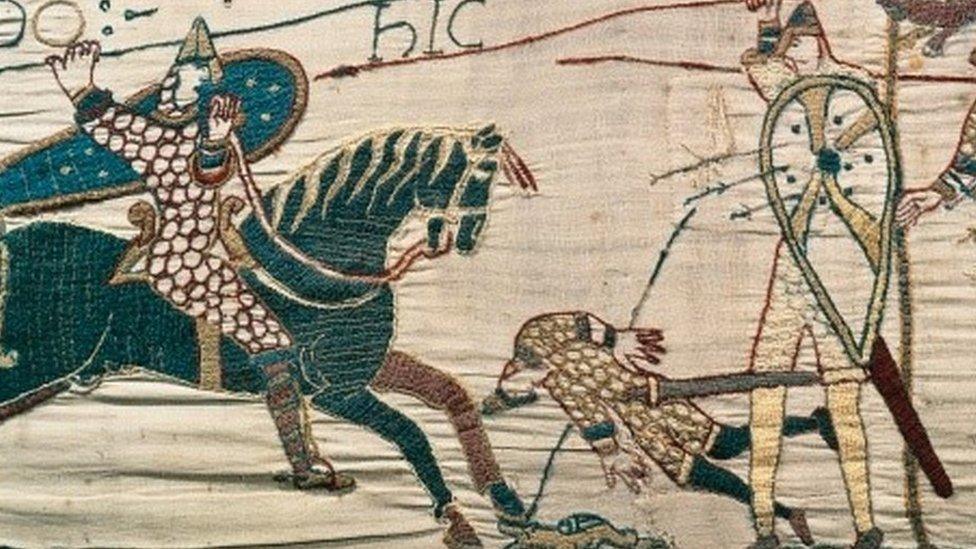
A detail in The Bayeux Tapestry depicts Harold being killed by a chance arrow
The Battle of Hastings saw William, the Duke of Normandy, defeat the last Anglo-Saxon king, Harold
According to legend derived from the Bayeux Tapestry, Harold was killed by an arrow to his eye
William the Conqueror commissioned an exhaustive catalogue of property across England. It was nicknamed the Domesday Book by the English - the Day of Judgement
The Normans gave us many of our most popular Christian names. William has remained one of the most popular ever since, replacing the Leofrics and Aethelred's of pre-conquest times

- Published13 October 2016
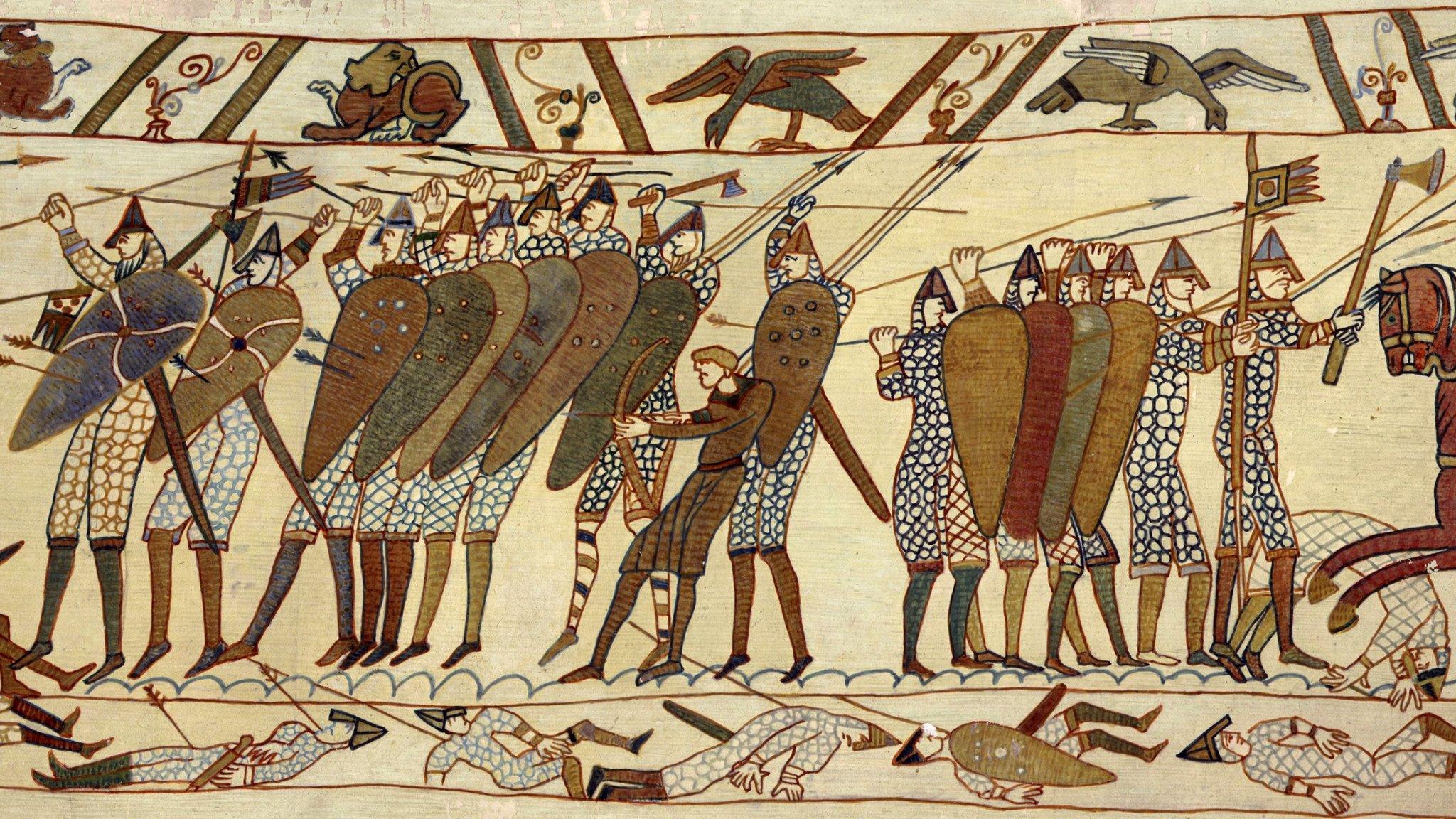
- Published10 October 2016

- Published8 October 2016
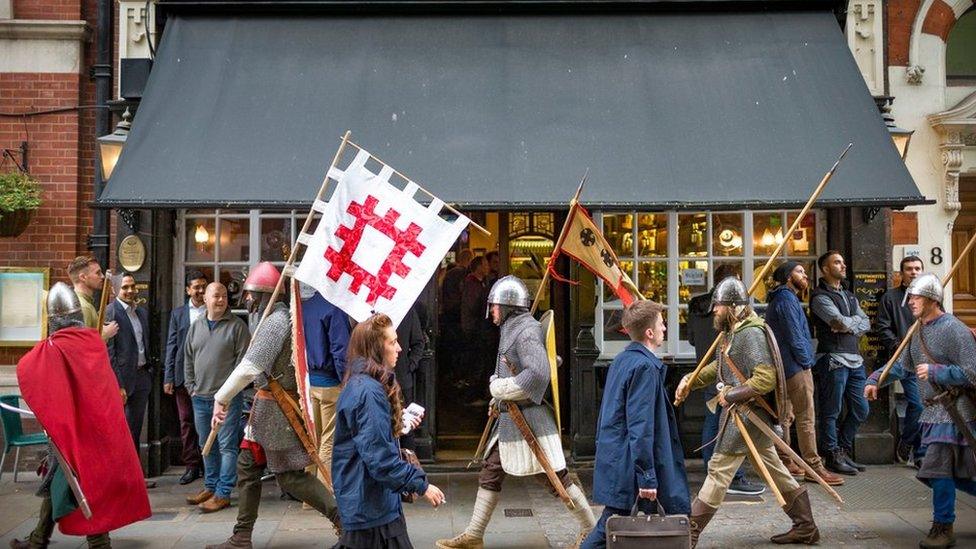
- Published26 September 2016
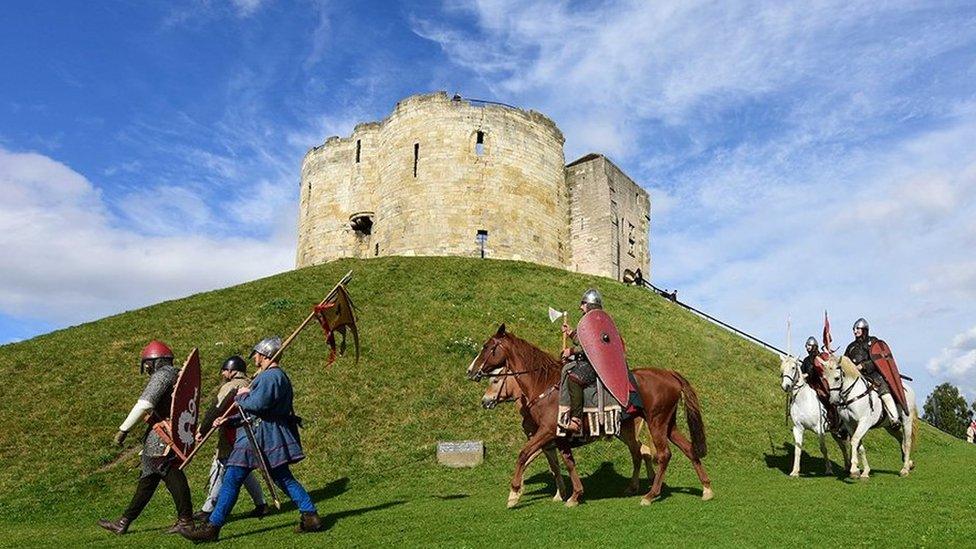
- Published1 August 2016